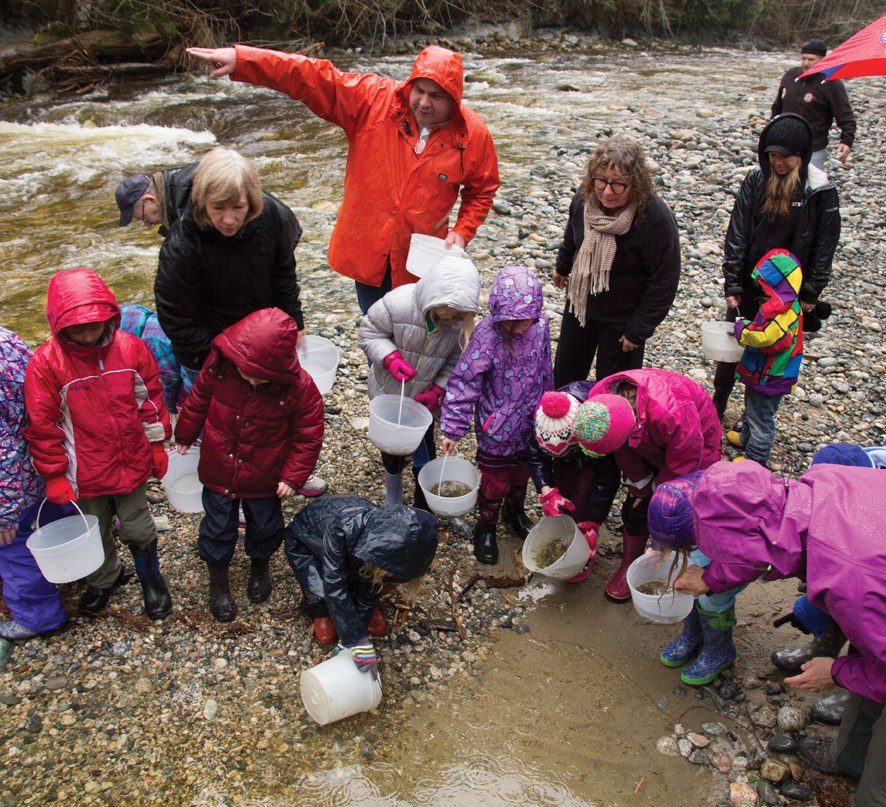Margaret Cooper’s Grade 1 class from West Sechelt Elementary released more than 50,000 pink salmon into Chapman Creek as part of a total 150,000 that began their two-year life cycle on Feb. 10.
“We were studying salmon, so this was a great opportunity to come and see the hatchery,” Cooper said. “We’re also studying the water cycle so we wanted to see how water is used here.”
At about the same time, another 150,000 pink salmon were put into a net pen at Port Stalashen in Wilson Creek for 10 days to imprint the fish and help their survival rates.
Chapman Creek Hatchery manager David Burnett explained that imprinting is how salmon know how to find the correct stream when they return to spawn. He said the release is to “augment the stocks, basically so we can keep having really good pink returns.”
The salmon were spawned at Quinsam Hatchery in Campbell River around last October, Burnett said. They stayed at Quinsam for a couple of months as eggs and were then were transported by truck, in boxes with wet paper towels, to Chapman Creek, where they were hatched. Burnett said the transport boxes look kind of like commercial beehives.
“I think it’s great for the kids to see the habitat, the cycle of life, how fish are a part of that,” Burnett said.
Kathy Reid – a teacher on call for SD46 – said she often volunteers her time with West Sechelt Elementary.
“[The kids] are in the environment at least twice a week – they’re doing a whole science study,” Reid said. “The water study that Ms. Cooper has done with the group is amazing. They’re very knowledgeable kids. They could tell you the whole water cycle, they totally understand it.”
The pink salmon were released as fry, and Burnett said they are expected to return in two years as mature adults, which is the shortest life cycle of a salmon species.
Burnett said coho have a life cycle of four years while Chinook have a life cycle of five to six. Sockeye – which are not raised in Chapman Creek Hatchery – have a life cycle of three to five years.



